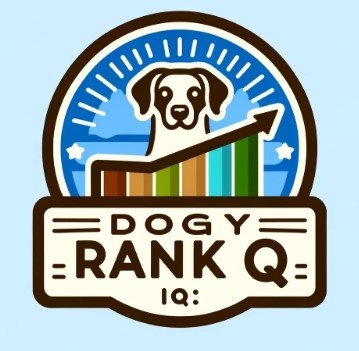Did you know that a dog’s diet should contain ten essential amino acids? These amino acids, which make up the proteins in dog food, are crucial for your furry friend’s muscle growth, repair, and overall health. With so many pet food options on the market, it’s essential to understand the importance of high-quality ingredients and how they can impact your dog’s well-being. In this ultimate guide, we’ll provide you with the knowledge you need to make informed decisions about what you feed your beloved pets.
Finding the right pet food can be a daunting task, but with the right information, you can navigate the pet food aisle with confidence. Our guide will walk you through the key factors to consider when choosing dog food, such as the importance of natural and organic ingredients, the role of essential nutrients, and the specific dietary requirements of different dog breeds and life stages. Whether you have a dog or a cat, this guide will help you make the best choices for your furry friends.
At Hot Diggity Dog Resort, we prioritize your pet’s health and happiness. Our mission is to provide you with the best pet food options that are both nutritious and delicious. With our ultimate guide, you’ll unlock the secrets to finding the healthiest pet food products available, ensuring that your beloved companions receive the optimal nutrition they deserve.
Key Takeaways
- Understand the importance of high-quality protein sources in your dog’s diet.
- Discover the benefits of natural and organic ingredients for your pet’s health.
- Learn about the essential nutrients your dog needs for optimal well-being.
- Explore the different types of dog food and their unique characteristics.
- Gain the confidence to make informed decisions about what you feed your furry friends.
Why is Good Dog Nutrition Important?
Proper nutrition plays a vital role in your dog’s overall health and wellbeing. To ensure your dog maintains its energy, has a strong immune system, and develops and maintains healthy bones and muscles, a balanced diet needs the right amounts of proteins, fats, carbohydrates, vitamins, and minerals. Proteins are essential for muscle growth and repair, fats provide energy and help with nutrient absorption, while carbohydrates offer a source of quick energy. Vitamins and minerals, though required in smaller amounts, are crucial for various metabolic functions and maintaining good health.
Balanced Diet for Optimal Health
Dogs are not strict carnivores; they can derive nutrients from grains, fruits, and vegetables. However, the specific nutritional requirements can vary based on factors such as age, breed, and size. Large breed dogs and puppies, for instance, have different nutritional needs than their smaller counterparts. Carefully monitoring your dog’s growth and development, and tailoring their diet accordingly, is essential for their overall wellbeing.
Essential Nutrients for Dogs
A well-balanced dog diet should contain an appropriate balance of dog nutrition, canine dietary requirements, healthy dog diet, natural dog food, and dog food supplements. AAFCO, the regulatory body responsible for pet food standards, recommends that dog diets should contain at least 22% dry matter for growth and 18% dry matter for maintenance. The minimum dietary protein requirement for a growing dog is 18% dry matter, and 8% dry matter for an adult dog. Excess protein, above 30% dry matter, can potentially be harmful, while low-protein diets may be recommended for certain health conditions.
In addition to protein, dogs also require the right amounts of fats, carbohydrates, vitamins, and minerals to thrive. Careful consideration of your dog’s unique nutritional needs, based on their age, breed, and size, can help ensure they receive the healthy dog diet they deserve.
Types of Dog Food: Dry, Wet, Raw, and Homemade
When selecting the best dog food for your furry companion, several factors should be considered, including your pet’s age, breed, activity level, and health status. These variables can significantly influence your dog’s nutritional requirements and help determine the appropriate type and portion sizes of food.
Dry Dog Food (Kibble)
Dry dog food, commonly referred to as kibble, is the most popular type of dog food. It is convenient, helps to clean your dog’s teeth, and is generally more economical. However, some dry dog food may contain less moisture than wet food and may also include preservatives.
Wet Dog Food (Canned or Pouched)
Wet dog food, which includes canned or pouched varieties, has a high moisture content, helping to keep your dog hydrated. Wet food is often more palatable for picky eaters, but it can be more expensive and have a shorter shelf life compared to dry dog food.
Raw Dog Food Diet
Raw dog food is touted to provide a more natural and species-appropriate diet, potentially improving your dog’s coat, digestion, and overall health. However, this type of dog food requires careful handling due to potential health risks if not properly prepared and stored.
Homemade Dog Food
Homemade dog food allows you to have complete control over the ingredients, ensuring your pet receives a tailored, nutritious diet. However, it’s crucial to carefully formulate the recipe to meet your dog’s specific nutritional needs, so consulting a veterinarian or veterinary nutritionist is recommended.
Regardless of the type of dog food you choose, it’s essential to consider your pet’s individual needs and make informed decisions to provide them with the best possible nutrition.
Reading Dog Food Labels: What to Look For and What to Avoid

When it comes to selecting the right dog food for your furry friend, reading and understanding the labels is crucial. The Association of American Feed Control Officials (AAFCO) sets guidelines for pet food labels, which can help you navigate the vast array of options and make informed decisions about what to feed your dog.
Decoding the Ingredients List
The ingredients list on dog food labels is a valuable resource for understanding the composition of the product. Ingredients are listed in descending order by weight, with the primary ingredient making up the largest portion of the food. It’s important to look for high-quality, whole-food ingredients like real meat, poultry, or fish, as well as beneficial supplements like probiotics, vitamins, and minerals. Avoid products that contain artificial preservatives, colors, and fillers, as these can have negative effects on your dog’s health.
Guaranteed Analysis and AAFCO Standards
The guaranteed analysis on a dog food label provides information on the minimum or maximum amounts of specific nutrients, such as protein, fat, and fiber. An AAFCO statement on the label indicates that the product meets established nutritional standards, ensuring that it is complete and balanced for your dog’s life stage, whether they are a puppy, adult, or senior. Familiarizing yourself with these standards can help you compare different dog food options and select the one that best suits your pet’s unique needs.
Common Dog Food Ingredients to Be Aware Of
While most dog food ingredients are safe and nutritious, there are a few that you should be aware of. Some dogs have allergies or sensitivities to certain ingredients, such as grains like wheat, corn, and soy, as well as dairy, eggs, and certain types of meat. In addition to potential dog food allergens, some human foods can be extremely toxic ingredients for dogs, including alcohol, chocolate, coffee and caffeine-based products, grapes and raisins, macadamia nuts, onions, garlic, chives, raw/undercooked meat and eggs, and xylitol. It’s important to carefully read dog food labels and avoid products containing these potentially harmful ingredients.
| Ingredient | Potential Risks |
|---|---|
| Wheat, corn, and soy | Common dog food allergens |
| Dairy and eggs | Potential food sensitivities |
| Alcohol, chocolate, caffeine, grapes, raisins, macadamia nuts, onions, garlic, chives, raw meat and eggs, xylitol | Highly toxic for dogs |
By understanding the common dog food ingredients to be aware of, you can make informed decisions when selecting the best food for your canine companion, ensuring their safety and well-being.
Considerations for Puppies, Adult Dogs, and Senior Dogs

Every dog is unique and has specific nutritional needs. Factors such as age, breed, size, and activity level can all affect the type and amount of food your dog requires. Understanding these differences is crucial for providing your furry friend with the optimal diet to support their health and well-being at every stage of life.
Nutritional Needs for Puppies
Puppies have higher requirements for protein, fat, and essential nutrients like calcium and phosphorus to support their rapid growth and development. Puppy formula or “all life stages” dog food is recommended to ensure your young pup receives the necessary nutrients for proper bone, muscle, and organ development.
Adult Dog Dietary Requirements
As dogs reach adulthood, their nutritional needs shift to maintaining overall health and providing sustained energy. Adult dog diets should have moderate levels of protein, fat, and carbohydrates to support their daily activity levels. Breed-specific nutritional needs should also be considered, as large breeds may benefit from diets that support joint health, while small breeds may require smaller kibble sizes to prevent choking.
Senior Dog Nutritional Considerations
As dogs enter their golden years, typically around 7 years of age and older, their nutritional requirements change once again. Senior dogs often need lower levels of fat and calories, as well as added nutrients like glucosamine and chondroitin to support their joint health and mobility. Consulting your veterinarian to determine the right senior dog food for your furry friend is essential for maintaining their quality of life.
Ultimate Guide to Choosing the Best Ingredients for Your Dog’s Food
Reputable and Trusted Brands
When choosing a dog food brand, it’s important to select a reputable company with a history of producing high-quality pet food. Look for reputable dog food brands that have undergone rigorous testing and meet industry standards for safety and quality. Consulting your veterinarian and fellow dog owners for recommendations can also be helpful.
Tailoring to Your Dog’s Specific Needs
Consider your dog’s specific needs when choosing a brand, as some offer tailored dog food formulas designed for certain breeds, sizes, or health conditions. If you choose to make homemade meals for your dog, be sure to consult with a veterinarian or veterinary nutritionist to ensure the diet is well-balanced.
Budget-Friendly Options
Lastly, consider your budget, as high-quality dog food may be more expensive but can be an investment in your dog’s long-term health. Fortunately, there are budget-friendly dog food options available that can provide your furry friend with the essential nutrients they need without breaking the bank.
Conclusion: Providing Optimal Health and Nutrition for Your Dog
Choosing the best dog food for your furry friend is a crucial decision that can have a significant impact on their overall dog health and nutrition. By understanding your dog’s specific nutritional needs and making informed choices, you can ensure that they receive the optimal dog diet they deserve. Remember to consider factors such as age, breed, and any health conditions your dog may have when choosing a dog food brand. Read the ingredient list carefully and avoid products with artificial additives, fillers, and potential allergens. Gradually transitioning your dog to a new food is important to prevent digestive upset. With the right nutrition, you can help your dog maintain a healthy weight, strong immune system, and a shiny coat, giving them the best chance at a long and happy life.
Consulting with your veterinarian is essential when devising a weight management plan for your dog and determining their specific dog health and nutrition needs based on factors such as age, breed, size, activity level, and existing health conditions. By providing your dog with the right balance of proteins, fats, carbohydrates, vitamins, and minerals, you can support their overall well-being and help them thrive.
Transitioning your dog to a new food should be done gradually to avoid any digestive issues. Introducing the new food slowly, over the course of several days or weeks, will allow your dog’s digestive system to adjust and ensure a smooth dog food transitioning process. With the right optimal dog diet, you can give your beloved companion the best chance at a long, healthy, and fulfilling life.
FAQ
What are the key factors to consider when choosing pet food?
The key factors to consider when choosing pet food include the importance of high-quality protein sources, the benefits of organic and natural ingredients, and the role of essential nutrients in your pet’s overall well-being.
Why is proper nutrition important for my dog’s health and well-being?
Proper nutrition plays a vital role in your dog’s overall health and wellbeing, as it ensures your dog maintains its energy, has a strong immune system, and develops and maintains healthy bones and muscles.
What are the different types of dog food available?
The main types of dog food include dry dog food (kibble), wet dog food (canned or pouched), raw dog food diet, and homemade dog food.
What should I look for when reading dog food labels?
When reading dog food labels, it’s important to understand the ingredients list, the guaranteed analysis, and the AAFCO standards to ensure you are choosing a high-quality and nutritious option for your dog.
Are there any common dog food ingredients I should be aware of?
Yes, some dogs may have allergies or sensitivities to certain ingredients, such as grains, dairy, eggs, and certain types of meat. Additionally, some human foods can be toxic to dogs and should be avoided.
How do the nutritional needs of puppies, adult dogs, and senior dogs differ?
The nutritional needs of dogs can vary significantly based on their age, breed, size, and activity level. Puppies require higher levels of protein, fat, and essential nutrients, while adult dogs need a balanced diet to maintain their overall health, and senior dogs may require lower levels of fat and calories with added joint support.
How can I choose the best dog food brand for my pet?
When choosing a dog food brand, it’s important to select a reputable company with a history of producing high-quality pet food that meets industry standards. Consulting your veterinarian and fellow dog owners for recommendations can also be helpful, and considering your dog’s specific needs and your budget can ensure you make the best choice.







